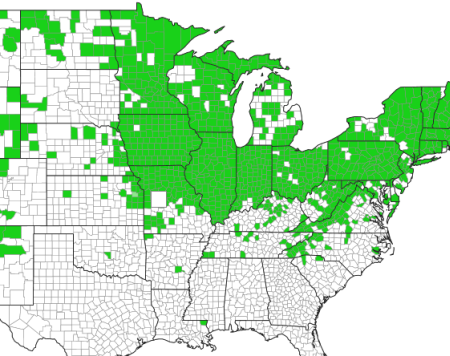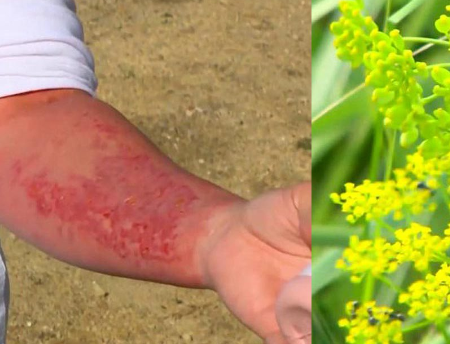Click below to listen to my 2 min. Garden Bite radio show: Wild parsnip
This is the month to deal with this nasty “bite back” invasive.
Wild Parsnip (Pastinaca sativa). This invasive plant’s poisonous sap, when combined with sunlight, creates a chemical reaction called phytophotodermatitis and is so corrosive that it can cause second degree burns. And sweat makes it absorb quicker!


The Dept. of Natural Resources recommends wearing full protection including gloves, long sleeves and long pants to prevent irritation. This is a great news story by my friend, Reporter Bill Hudson, on the effects:
Wild Parsnip is a non native root vegetable that’s run amok. It escaped cultivation and has spread quickly into disturbed habitats, along roadsides and rail lines and in newly restored prairie areas. It doesn’t seem to care if the soil is dry or moist. It’s important to note that, well-established prairies likely don’t have wild parsnip.

Through the month of June, it’s a good time to use a herbicide, such as 2,4-D on the foliage. Experts suggest goggles when spraying. Use care with this chemical, it’s been banned in other countries.
Then stop, then use it again during September and October.
You can also mow it down through May and June, but that’s it. HOWEVER, if you mow outside of that time, you can end up with even more as the plant tries to reproduce! The thing is, this method will likely take years, if you have a large infestation, to reduce the seedbank!
Wild Parsnip [Dept. of Natural Resources] for more information
Burned by Wild Parsnip [Wisconsin Natural Resources magazine] for information on what to do if you’re burned and a lot more!
The likeliest time to be bit by parsnip is in the Spring when the sap is at full flow. Once the leaves have dried, it’s not so irritable!

